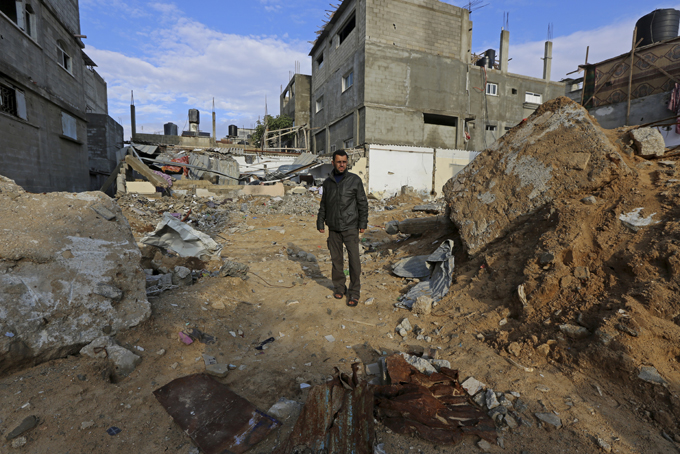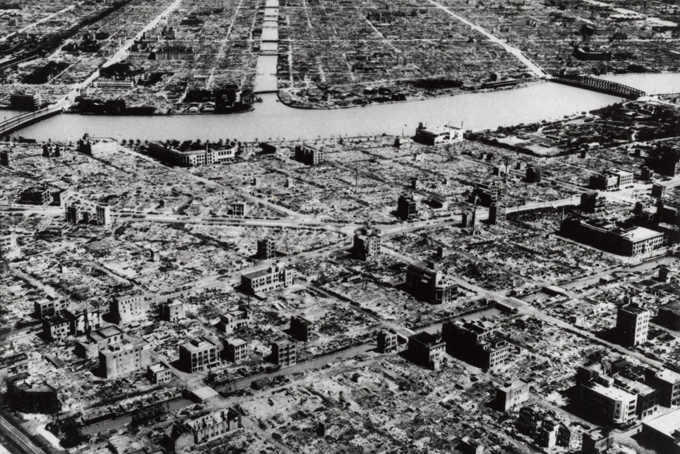
JERUSALEM (AP) — Rarely has the world had such a front-row seat for a concerted attack by a major air force on an urban area as it did during last summer’s Gaza war. But Israel is far from the only country to have killed civilians during war. The list is long, from Dresden to Japan, from Grozny to Algeria.
The United States has killed civilians in its recent conflicts — in Iraq and Afghanistan in the last decade, and earlier in Vietnam and Korea as well. Syria’s ongoing civil war has killed an estimated 220,000 people in about four years, nearly half civilians and many of those bombed by their own government. And Israel itself has killed civilians before, including in previous Palestinian campaigns and during wars in Lebanon.
Recent years’ establishment of war crimes tribunals and the International Criminal Court aims to give leaders pause, but prosecution is a politically complicated process and the carnage goes on.
Last summer, Israel and the Hamas rulers of Gaza fought for most of July and August. Israel demanded an end to rocketing of its cities, a policy that Israel says was itself a war crime. By the end, 2,205 Palestinians were dead, including at least 1,483 civilians, according to preliminary U.N. figures. Israel says about 890 militants were among those killed in Gaza. On the Israeli side, 67 soldiers and five civilians were killed. The Associated Press reviewed the 247 strikes in which residential compounds were targeted, according to witnesses and site visits. The review found that these strikes killed at least 844 Palestinians, including 508 children, women and older men — demographics generally accepted as probably civilian. Israel says it tried to warn civilians and avoid causing their deaths.
Some examples from recent history of conflicts in which civilians were targeted:

THE U.S. AND ALLIED ATTACKS ON TOKYO AND DRESDEN
The nuclear bombs dropped by the United States on Hiroshima and Nagasaki in August 1945 killed about 130,000 people, secured Japan’s surrender and ended World War II. Less well-known, perhaps, is Operation Meetinghouse — the firebombing of Tokyo five months earlier. It is believed to have killed about 100,000 people, which would make it the single deadliest event in that war. A month before that, about 25,000 people were killed in concerted Allied bombing of the German city of Dresden, which destroyed much of a what was a key industrial center contributing to the Nazi war effort. (The Germans killed more than 28,000 in the Blitz, the bombing of London — as well as millions of others throughout World War II.)
NATO’S BOMBING OF SERBIA
For three months in 1999, NATO waged a bombing campaign against Serbia without U.N. approval, aimed at forcing a withdrawal of Serbian security forces from the province of Kosovo, which had historical importance to Serbs but housed an ethnic Albanian majority seeking to secede. The NATO bombing campaign was in response to a brutal crackdown on Kosovo’s ethnic Albanians by Serbia’s leader Slobodan Milosevic who was later charged with crimes against humanity. Milosevic died while on trial.
A report issued for the International Criminal Tribunal for the former Yugoslavia said it appeared about 500 civilians were killed and noted that targets included “some loosely defined categories such as military-industrial infrastructure and government ministries and some potential problem categories such as media and refineries.”
FRANCE IN ALGERIA
France’s empire stretching across the globe was coming undone in the 1950s, but the country fought its most brutal battle for one precious piece of turf: Algeria, colonized beginning in 1830. The war to hold onto Paris’ crown jewel lasted seven years, until 1962. The number of Algerians killed remains under debate, but the leading French historian on the war says 350,000 to 400,000 Algerian civilians died. In a brutal precursor to the war, the 1945 uprising in the town of Setif, Algerians say some 45,000 people may have died at the hands of the French troops putting down the revolt; French figures put the number of Algerian dead there at 15,000 to 20,000.
RUSSIA IN CHECHNYA
During Russia’s wars against separatists in Chechnya, the armed forces first attacked Grozny, the capital, in late 1994 and early 1995 in what at the time was considered to be the heaviest bombing campaign in Europe since the end of World War II. Russian forces also attacked Grozny in 1999, leveling the city before driving out the rebels. Rights activists and aid workers say many thousands of civilians died in the Russian attacks but precise numbers remain unknown.
GUATEMALAN CIVIL WAR
Recent Latin American history is littered with conflicts in which governments stand accused of having targeted civilians, such as in Chile after the 1973 coup against Salvador Allende or Argentina under the 1976-83 dictatorship. An egregious case was the Guatemalan civil war of 1960-1996, which killed up to 200,000 people, mostly indigenous Mayan civilians who were targeted specifically because of their perceived alliance with leftist guerrillas.
NIGERIAN ARMY AVENGING BOKO HARAM ATTACKS
The Nigerian military has been accused of deliberately targeting civilians in revenge attacks after it was hit by the radical militia Boko Haram. In one of the worst cases, hundreds were killed and hundreds of homes set ablaze and destroyed in the town of Bama last year, after a suspected Boko Haram fighter killed one soldier.
___
Associated Press writers Elaine Ganley in Paris, Lynn Berry in Moscow, Michelle Faul in Lagos, Katherine Corcoran in Mexico City, Ken Moritsugu in Tokyo and Michael Corder in the Hague contributed to this report.